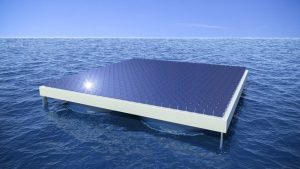Scientists developed a wave-resisting platform that can hold multiple solar panels and float safely on the rough ocean surface.
The concept of floating solar has been around for quite some time, but most technologies have been developed for in-land aquifers with somewhat stagnant waters. The main reason for this is that seas and oceans can become rough in a matter of minutes. Any technology that is floating on top, therefore, can easily be damaged.
Considering the huge amount of money that has to be invested in solar power plants, placing them in open seas is quite a huge risk to take.
A team of scientists from University of Wien, however, might have developed just what the industry needs. Their design of a floating system of platforms, which is sturdy enough to carry a massive solar power plant at sea. For a first time, such design seems like something that holds a great potential to become viable.
The system, called Heliofloat, uses unique floats with open-bottom, flexible cylinders, which dampen wave energy, rather than absorb it. This allows the system to to withstand strong waves, capable of easily destroying conventional platforms.
The cylinders are open at the bottom, resembling the ballast tanks of submarines. This construction traps air inside, which then gets compressed by the pressure of the water. While this part of the system acts as a shock absorber, the sides of the cylinders, or barrels, flex when being stroked by waves. This makes them absorb much less energy.
The developers are convinced that their system is stable and strong enough to support a solar power plant with dimensions of a football field. What is more, they believe that Heliofloattechnology can have many other applications. The system can carry anything, from desalination plants, through biomass extraction technology, all the way to providing protection of aquifers against evaporation. It can even sustain floating houses.



















